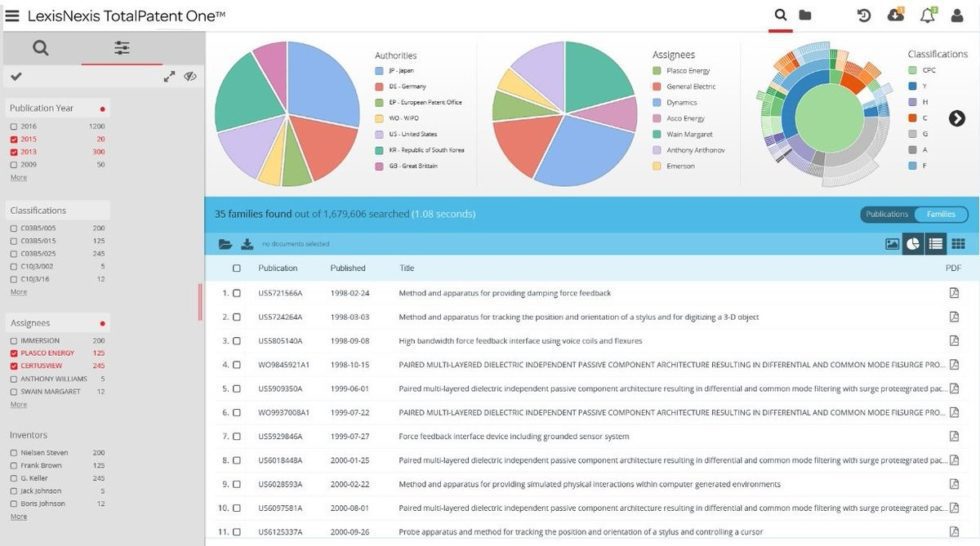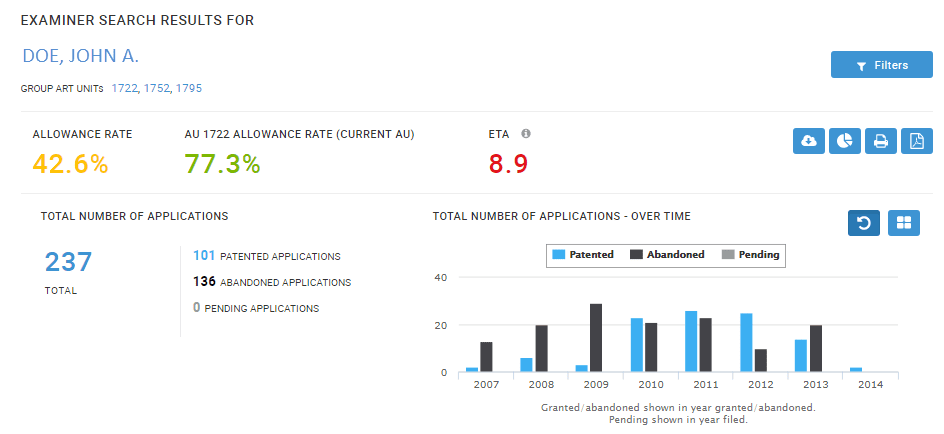5 Stages for Patent Efficiency

Patent applicants and professionals are in for the long haul when they enter patent prosecution, which typically unfolds over the course of several years. The silver lining of the lengthy patent process is that each subsequent stage presents an opportunity to use patent prosecution tools for patent efficiency and to save money while inching ever closer to acquiring patent protection.
Stage 1: conducting prior art searches
Prior art searches have always been difficult because prior art (the references that impact patentability) could exist anywhere in the world. The global nature of prior art leaves patent practitioners in a tough situation: they could spend a nearly unlimited amount of time combing through the world’s various prior art archives, but they are limited by budget constraints. Striking the right balance between cost and benefit is important because, regardless of budget restrictions, prior art determines whether an invention is patentable and also informs patent drafting considerations.
Before the development of modern patent search tools, patent professionals were forced to search the patent databases of multiple patent authorities to conduct global patent searches. They also had to grapple with translating patent documents into a familiar language so they could assess the impact the documents could have on their patent filings. Today, users of the LexisNexis TotalPatent One® patent search platform can simultaneously access patent documents from more than 100 patent authorities, eliminating the need to search multiple databases separately and dramatically improving patent efficiency. TotalPatent One® also offers machine-translated patent documents to help reduce the time spent conducting patent searches and, ultimately, save clients money.

Stage 2: targeting USPTO art units
After conducting a thorough prior art search, many patent professionals carefully draft their patent applications to avoid patent examiner rejections or objections, but they let fate determine which patent examiner is assigned to their case. This is not out of laziness by any means; patent professionals rarely realize that they can influence which patent examiner they receive. With the proprietary patent metrics and patent analytics available on the LexisNexis PatentAdvisor® patent prosecution platform, patent professionals can identify which USPTO art units are most likely to be assigned to examine their patent application, and which of those potential art units are statistically the most likely to issue a patent.
Then, using insights from the Tech Center Navigator (formerly PathWays™) tool, PatentAdvisor™ users can identify ways to amend their patent drafts to increase the chances of having their patent applications assigned to the most applicant-friendly art unit. An applicant-friendly art unit contains the most patent examiners who typically grant patents in less time and at a lesser cost than examiners in other art units.
Another option to positively influence the likelihood and the time it takes to get an application granted is with customized Pre-Filing Classification Reports™. Classification experts provide in-depth insight into which art unit the patent application will be assigned. That insight can be used to tailor the application to target a more favorable art unit and improve your chances of efficient prosecution.
Stage 3: revising patent application drafts
Where prior art searches help address novelty and nonobviousness issues, a thorough review of a patent application before submission to the USPTO can help avoid Section 112 rejections that also require time and money to overcome. Avoiding Section 112 rejections, which arise when patent specifications either fail to enable the making and use of the underlying invention or fail to clearly define the sole of the invention, is simplified with the LexisNexis PatentOptimizer® patent drafting tool.
PatentOptimizer® is capable of effectively reviewing a patent specification for claim errors and Section 112 issues much faster than what is possible manually to create patent efficiency. PatentOptimizer also helps identify patent profanity, inaccurate or inconsistent part names and numbers, and inconsistent measurement conversions, and reviews the overall quality of a patent, which results in greater overall patent quality and a shortened drafting process.
Stage 4: developing a prosecution strategy for patent efficiency
Shortly after a patent application is filed with the USPTO, a patent examiner in an appropriate art unit will be assigned to evaluate it based on its merits and conformity with USPTO rules. Patent examiners, being human, each have their own quirks, tendencies and habits that can be revealed by analyzing their historical patent data and statistics. The PatentAdvisor patent prosecution platform offers a wide array of patent examiner information that can be used to identify actions patent professionals can take for optimal outcomes. By gaining a better understanding of their patent examiners, PatentAdvisor users can develop patent strategies that help shorten the amount of time a patent application spends in the patent process, while reducing the number of rejections and objections faced along the way.

Stage 5: drafting effective office action responses
Despite how well you draft your patent application, patent examiner office actions will never be completely avoidable. The good news is that when an office action is received, there is no need to draft a response completely from scratch. Regardless of the type of rejection that is issued, it is likely that prior patent applicants have not only faced very similar rejections in the past, but also that some of them were able to craft an argument to overcome the rejection. The LexisNexis PatentOptimizer ® Office Action Response Tool™ reduces the amount of time spent responding to office actions by accessing USPTO patent documents that are similar to your case. Using the responses to office actions submitted by previous patent applicants, the Office Action Response Tool produces outlines of common applicant arguments and provides users with a response framework that can help efficiently overcome examiner office actions.
Obtaining a patent means working through stage after stage of a seemingly endless process; but each subsequent stage is a new opportunity to improve patent efficiency and prosecution performance. LexisNexis® Intellectual Property offers a wide variety of products that allow patent professionals to leverage patent data and analytics for optimal outcomes and client satisfaction.
Learn more:
- TotalPatent One: the patent search software tool that provides comprehensive results you can rely on
- PatentAdvisor: exclusive patent analysis tools for successful patent prosecution
- Tech Center Navigator: clear direction toward success when drafting patent applications
- PatentOptimizer: write higher-quality patents with fewer errors

Write high-quality patents with precision
Automate the review process and eliminate the need for manual draft reviews. Quickly and effectively check all parts of a patent application draft—from patent claims to patent drawings and everything in between.
